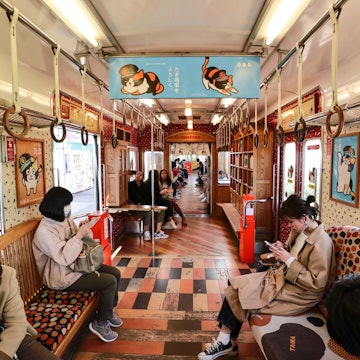
6 things you need to know before travelling to Japan right now

Feb 18, 2020 • 4 min read

Although some things are different, Japan's cities are still huge. Sakarin Sawasdinaka / Shutterstock
Visiting Japan is a wonderful experience. But even more so than many other places, a tourist boom from regional neighbours and global visitors has meant that quite a few of the idiosyncrasies about travelling in Japan have changed in recent times.
So whether you’re a first-time traveller to Japan, or you’ve been before but not in the last year or so, here are a few updates you might not be aware of.

There are more regional rail passes than ever
From Hokkaidō to Kyūshū and all the places in between, Japan now has a bevy of regional rail passes alongside the famous Japan Rail Pass, which covers (most) JR trains nationwide. These can be truly excellent value.
Notably, quite a few of these have different timings to the Japan Rail Pass, which comes in units of seven, 14 or 21 consecutive days.
The Hokkaidō Rail Pass, for example, allows you to travel on three, five or seven consecutive days – or you can buy a flexible four-day pass, where you can travel on any four days in a 10-day period, which can be really good value if you want to make the most of the places where you’re stopping over.
Read more: Everything you need to know about visiting an onsen in Japan
If you remember the old JR East Pass, note that this has now been split into two areas: either the Nagano–Niigata zone or the Tōhoku zone. Again, these are both the ‘flexible days’ type, offering travel on any five days over the period.
Consider also the Hokuriku Arch pass when travelling between Tokyo and Osaka, which offers travel via the Hokuriku Shinkansen high-speed train route from Tokyo to Kanazawa, and onwards to Kyoto and Osaka on the slower trains. This seven-day pass can save you over ¥4000 compared with the seven-day Japan Rail Pass, and the region is a great place for a stopover.
The country is about to go Olympics & Paralympics mad
Unless you're specifically travelling to a host city for the Olympic and/or Paralympic Games, it's worth planning your visit so that it doesn't coincide with the Games (or immediately before or after). That’s no different for Tokyo, where the 2020 Olympics take place from 24 July to 9 August and the Paralympics run from 25 August to 6 September.
While Japan did a great job of hosting the Rugby World Cup in 2019, Tokyo in particular is likely to be a bit of a zoo during the Olympic Games. If you want to visit Japan this summer, consider the cooler northern regions of Hokkaidō and Tōhoku, or (if you don’t mind getting sweaty) points west of Osaka.
On the plus side, the Games have brought a hotel boom to Tokyo, a city where accommodation can be scarce and expensive. Soft infrastructure, too, such as initiatives to spread the common practice of speaking other languages, will also benefit travellers before and after the event itself.
You won’t need cash as much as you used to
It used to be the case that very few places in Japan accepted overseas credit cards, and that people with foreign bank cards had to visit either the post office or a 7-11 to get cash, as ATMs also rarely accepted them. Happily, this is changing: international cards are much more commonly accepted, and the number of ATMs taking overseas cards is growing as well.
Read more: These 7 Japanese national parks showcase Nippon's stunning natural beauty
While cash is still very useful, refundable tap-to-pay stored-value cards like Suica and ICOCA – which mostly work interchangeably nationwide under the IC card umbrella – are really a must-have, but note that you need to load the physical cards with cash.
And on that note...
Set up the amazing tap-to-pay Suica system before you go
If you have a smartphone from the last few years (iPhone 7 or later, or an Android phone of a similar generation), you may be able to store a JR East Suica card on it.
This is an absolute gamechanger, not least because — unlike a physical card — you can top it up right on your phone using the credit or debit card you use for Apple Pay (or Google Pay). Then you just tap your phone on the Suica reader on turnstiles or to pay in shops.

Consider using an eSIM
It’s better than it used to be, but Japan still has rules about SIM cards that seem a little baffling to many overseas visitors. Instead of renting a SIM or a pocket wi-fi device, if you have a recent phone with an eSIM, consider getting a roaming plan that includes Japan.
Read more: Here's what you can expect on a Lonely Planet Experiences' tour of Japan
Note also that the publicly available wi-fi on trains, in stations and near other tourist areas is much more user-friendly than it used to be a few years ago, so the need for a high-data package isn’t such a pressing concern.
Bring an external battery to stay charged on trains
While wi-fi is a bit more accessible, a power pack for your phone, tablet and other device is still a really good idea, especially when travelling by train. Only the very newest trains have power sockets; Japanese railway companies do a great job at keeping their trains clean and comfortable for many years, so there are still quite a few older models still in service.















